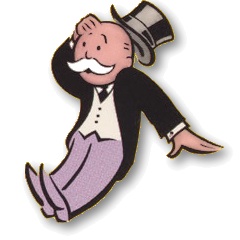In August, Bob Gutkowski, one-time head of MSG and Yankee confidant, filed a suit against George Steinbrenner over the origins of the YES Network. Gutkowski claimed that he proposed the idea of a regional sports network owned by the Yankees in 1998, four years before the launch of YES, and that Steinbrenner later promised him an executive position at YES only to renege on that promise later on.
Earlier this week, Judge Richard Sullivan of the Southern District threw out the suit on some technical legal grounds. According Richard Sandomir of The Times, Sullivan said that Gutkowski failed to adequately plead damages and that the “‘purported oral agreement’ was unenforceable.” I would expect Gutkowski to appeal.
For those interested in the legal rationale behind the dismissal, Judge Sullivan’s decision is available here as a PDF and embedded below.
 When the Yankees
When the Yankees  After a 10-1 drubbing of the Angels in Game 4, the Yankees had to wait a day to finish off the Angels. On the mound was A.J. Burnett, who pitched well in Game 2. He had, in fact, pitched will in both of his playoff starts, instilling us with a sense of confidence. After a season of watching Bad A.J. show up after a few Good A.J. starts, it seemed like he put all that behind him. He seemed to be, dare I say it, stepping up in the playoffs.
After a 10-1 drubbing of the Angels in Game 4, the Yankees had to wait a day to finish off the Angels. On the mound was A.J. Burnett, who pitched well in Game 2. He had, in fact, pitched will in both of his playoff starts, instilling us with a sense of confidence. After a season of watching Bad A.J. show up after a few Good A.J. starts, it seemed like he put all that behind him. He seemed to be, dare I say it, stepping up in the playoffs.
 On Tuesday night the Oklahoma Sports Museum honored CC Sabathia with the Warren Spahn Award, given to the best left-handed pitcher in baseball, for the third straight year. Created in 1999 and handed out annually, the award has seen just five winners. Randy Johnson won the first four years, Andy Pettitte took it in 2003, Johan Santana won it when he won his Cy Young awards, 2004 and 2006, and Dontrelle Willis won in 2005. The story of the night, however, was not the award itself, but rather how Sabathia handled the pressure of moving to New York.
On Tuesday night the Oklahoma Sports Museum honored CC Sabathia with the Warren Spahn Award, given to the best left-handed pitcher in baseball, for the third straight year. Created in 1999 and handed out annually, the award has seen just five winners. Randy Johnson won the first four years, Andy Pettitte took it in 2003, Johan Santana won it when he won his Cy Young awards, 2004 and 2006, and Dontrelle Willis won in 2005. The story of the night, however, was not the award itself, but rather how Sabathia handled the pressure of moving to New York.